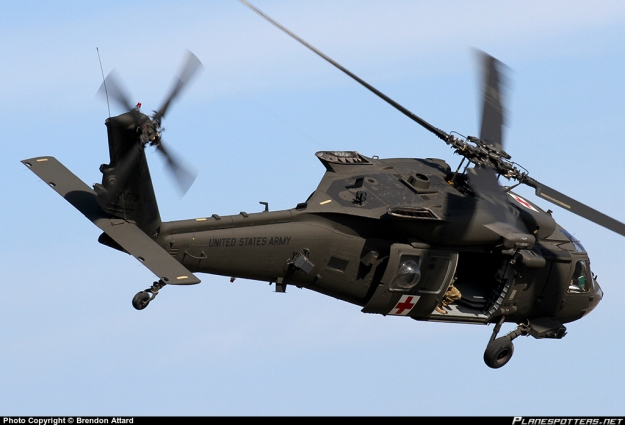Flying High: UH 60 Helicopter Safety Protocols You Have To Know
Understanding the Mechanics and Engineering Behind Uh 60 Helicopters
The UH-60 helicopter, commonly recognized as the Black Hawk, stands as a peak of modern-day rotorcraft technology, symbolizing a blend of robust design and complex auto mechanics. As we peel back the layers of the UH-60's style, a globe of intricate systems and careful engineering comes to light.
Background of UH-60 Helicopters
The background of UH-60 helicopters traces back to the late 1970s when the United States Army sought a advanced and versatile utility helicopter to replace its aging fleet. In reaction to this demand, the Sikorsky Aircraft Corporation established the UH-60 Black Hawk helicopter. Presented in 1979, the UH-60 promptly became a staple in armed forces operations because of its excellent capabilities.
The UH-60 was developed to master a selection of objectives, including troop transport, medical discharge, electronic warfare, and unique procedures. Its ability to adjust to various duties made it a valuable property to the U.S. uh 60. Army and various other military pressures around the globe
Throughout the years, the UH-60 platform has actually undergone numerous upgrades and variations to boost its efficiency and equal progressing mission needs. These helicopters have seen substantial solution in disputes such as the Gulf Battle, Afghanistan, and Iraq, showcasing their reliability and convenience in varied operational settings. The UH-60's rich background is a testimony to its enduring legacy as a top utility helicopter.

Engine and Power Equipments
Making use of sophisticated propulsion modern technology, UH-60 helicopters are outfitted with innovative engine and power systems to make sure ideal performance and dependability in a variety of functional situations. The UH-60, typically referred to as the Black Hawk, is powered by 2 General Electric T700-GE-701D engines, each efficient in supplying up to 1,940 shaft horse power. These turboshaft engines supply the required thrust for the helicopter to perform its objectives effectively, consisting of army transport, clinical emptying, and combat support.

Blades System and The Rules Of Aerodynamics
Just how do the blades system and aerodynamics of UH-60 helicopters add to their operational efficiency and flight capabilities? The blades system of the UH-60 helicopter plays an important duty in supplying lift and propulsion. The UH-60 includes a four-bladed, completely verbalized rotor system that enables high ability to move and security throughout flight. This style enables the helicopter to perform a large range of goals, from transportation and medical emptying to combat procedures.
Aerodynamics additionally play a crucial function in the performance of UH-60 helicopters. The structured fuselage and rotor blade layout minimize drag, enabling the helicopter to achieve greater speeds and better gas effectiveness. The aerodynamic layout of the UH-60 likewise contributes to its capacity to run in diverse ecological conditions, including high elevations and hot temperature levels.
Avionics and Flight Control Equipment

In its intricate sychronisation with the blades system and the rules of aerodynamics of UH-60 helicopters, the avionics and flight control systems develop a crucial network of innovations forming the airplane's operational capabilities. In the UH-60, these systems include electronic displays, communication radios, General practitioner navigating, climate radar, and autopilot systems.
The flight control systems of the UH-60 are accountable for converting the pilot's inputs right into the appropriate adjustments to the rotor system, making sure secure flight and maneuverability. These systems consist of hydraulic actuators, servos, and computer systems that interact to regulate the primary and tail rotors, in addition to other trip control surfaces. By exactly managing the helicopter's trip dynamics, these this link systems enable pilots to do a broad array of objectives, from transport and search-and-rescue to fight procedures, with accuracy and confidence.
Role and Applications in Air Travel
The duty and applications of avionics and flight control systems in air travel are integral to ensuring the risk-free and effective procedure of aircraft, including UH-60 helicopters. Avionics systems in UH-60 helicopters include a series of electronic systems that help in navigation, interaction, tracking, and managing various aircraft features. These systems include electronic display screens, auto-pilot systems, interaction radios, GPS navigating devices, and weather radar. Trip control systems play a vital function in steering the helicopter airborne, maintaining stability, and guaranteeing precise activities. The fly-by-wire innovation utilized in contemporary UH-60 helicopters equates pilot inputs into digital signals, which are after that interpreted by home the trip control computers to adjust the aircraft's control surfaces. Additionally, these systems integrate safety and security functions such as auto-pilot modes, surface recognition warning systems, and stability enhancement systems to improve the general safety and functional abilities of the UH-60 helicopters in various missions, consisting of troop transport, clinical discharge, search and rescue, and aerial firefighting.
Final Thought
In final thought, the UH-60 helicopter is a versatile aircraft with a rich history and advanced engineering. Its engine and about his power systems, rotor system, the rules of aerodynamics, avionics, and flight control systems all work with each other to make it a trustworthy and reliable device.
In its elaborate sychronisation with the blades system and the rules of aerodynamics of UH-60 helicopters, the avionics and trip control systems develop a critical network of modern technologies shaping the airplane's operational capabilities.The trip control systems of the UH-60 are responsible for converting the pilot's inputs into the ideal modifications to the rotor system, making sure secure flight and ability to move. Avionics systems in UH-60 helicopters encompass a variety of electronic systems that aid in navigating, interaction, tracking, and regulating different aircraft functions. Additionally, these systems include safety features such as auto-pilot modes, surface recognition alerting systems, and stability augmentation systems to boost the general safety and functional abilities of the UH-60 helicopters in various goals, including troop transport, clinical evacuation, search and rescue, and airborne firefighting.
Its engine and power systems, rotor system, aerodynamics, avionics, and trip control systems all work with each other to make it a efficient and trusted maker.